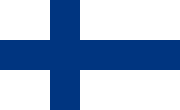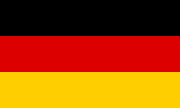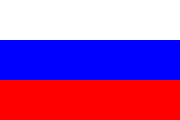Kronstadt
| Kronstadt (English) Кронштадт (Russian) |
|
|---|---|
| — Inhabited locality — | |
 Kronstadt
|
|
| Coordinates: | |
 |
 |
| Administrative status | |
| Country | Russia |
| Federal subject | Saint Petersburg |
| Administrative center of | Kronstadtskiy District |
| Statistics | |
| Area | 19.35 km2 (7.47 sq mi) |
| Population (2002 Census) | 42,800 inhabitants[1] |
| - Density | 2,212 /km2 (5,730 /sq mi)[2] |
| Time zone | MSK/MSD (UTC+3/+4) |
| Founded | 1704 |
| Dialing code(s) | +7 +7 812 |
| , http://www.kotlin.ru/ Official website | |
Kronstadt (Russian: Кроншта́дт), also spelled Kronshtadt, Cronstadt (German: Krone for Crown and Stadt for City) is a Russian seaport town, located on Kotlin Island, 30 km (19 mi) west of Saint Petersburg near the head of the Gulf of Finland. It is under the administration of the federal city of Saint Petersburg and is also its main port. In March 1921 it was the site of the Kronstadt rebellion.
Traditionally, the seat of the Russian admiralty and the base of the Russian Baltic Fleet were located in Kronstadt guarding the approaches to Saint Petersburg. The historic centre of the city and its fortifications are part of the World Heritage Site Saint Petersburg and Related Groups of Monuments.
Contents |
History



Kronstadt was founded by Peter the Great, who took the island of Kotlin from the Swedes in 1703. Pushkin's great-grandfather, Abram Petrovich Gannibal, oversaw its construction.[3] The first fortifications were inaugurated on 18 May 1704.
These fortifications, known as Kronstadt's Forts, were constructed very quickly. The Gulf of Finland is not very deep, so during the winter it freezes completely. Workers used thousands of frames made of oak logs filled with stones. These were carried by horses across the frozen sea, and placed in cuttings made in the ice. Thus, several new small islands were created, and forts were erected on them, closing all access to Saint-Petersburg by the sea. Only two narrow navigable channels remained, and the strongest forts guarded them.
Kronstadt was thoroughly refortified in the 19th century. The old three-decker forts, five in number, which formerly constituted the principal defences of the place, and defied the Anglo-French fleets during the Crimean War, became of secondary importance. From the plans of Eduard Totleben a new fort, Constantine, and four batteries were constructed (1856–1871) to defend the principal approach, and seven batteries to cover the shallower northern channel. All these fortifications were low and thickly-armored earthworks, powerfully armed with heavy Krupp guns in turrets. The town itself is surrounded with an enceinte.
In summer 1891, the French fleet was officially — and triumphally — received in Kronstadt. It was a first step towards the coming Franco-Russian Alliance.
Civil War
During the Petrograd riots of the February revolution, the sailors of Petrograd joined the revolution and killed their officers, and received a reputation as dedicated revolutionaries. During the civil war, the sailors participated on the red side, until 1921, when they rebelled against the Bolshevik rule.
Kronstadt and the supporting forts and minefields were the key to the protection of Petrograd from foreign forces. Despite this, the cruiser Oleg was torpedoed and sunk by a small motor boat after participating in a bombardment of Krasnaya Gorka fort that had revolted against the Bolsheviks.[4] this was followed on 18 August 1919 by a raid of seven Royal Navy Coastal Motor Boats into the harbor of Kronstadt itself damaging the Soviet battleships Petropavlovsk and Andrei Pervozvanny sinking a submarine supply ship, the Pamiat Azova.
Kronstadt Rebellion
In 1921, a group of sailors and soldiers and their civilian supporters rebelled against the Bolshevik government in Soviet Kronstadt. The garrison had previously been a centre of major support for the Bolsheviks, and throughout the Civil War of 1917–1921, the sailors of Kronstadt had been at the vanguard of the main Bolshevik attacks. Their demands included "freedom of speech", a stop to the deportation to work camps, a change of Soviet war politics, and the removal of the soviets (workers' councils) from "party control" [1]. After brief negotiations, Leon Trotsky (then the Minister of War in the Soviet Government, and the leader of the Red Army) answered by sending the army to Kronstadt, along with the Cheka, and the uprising was suppressed.
World War II
During World War II, Kronstadt was bombed several times by Nazi Germany's air force, the Luftwaffe. The most notable bombing was Stuka ace Hans-Ulrich Rudel's sinking of the Soviet battleship Marat.
Main sights

The town of Kronstadt is built on level ground and is thus exposed to inundations, the most famous being in 1824. On the south side of the town there are three harbors: the large western or merchant harbor, the western flank of which is formed by a great mole joining the fortifications which traverse the breadth of the island on this side; the middle harbor, used chiefly for fitting out and repairing vessels; and the eastern or war harbor for vessels of the Russian navy. The Peter and Catherine canals, communicating with the merchant and middle harbours, traverse the town. Between them stood the old Italian palace of Prince Menshikov, the site of which was later occupied by a pilot school.

The modern town's most striking landmark is the enormous Naval Cathedral, built from 1908 to 1913 and considered to represent a culmination of the Russian Neo-Byzantism. The older St Andrew Cathedral (1817), formerly Kronstadt's pride and beauty, was destroyed on communist orders in 1932. St Ioann of Kronstadt, one of the most venerated Russian saints, served there as a priest from 1855-1908.

Among other public buildings are the naval hospital, the British seamen's hospital (established in 1867), the civic hospital, admiralty (founded 1785), arsenal, dockyards and foundries, school of marine engineering, and the English church. The port is ice-bound for 140-160 days in the year, from the beginning of December to April. A very large proportion of the inhabitants are sailors.
The Kronstadt Sea Fortress used to be considered the most fortified port in the world. Kronstadt still retains some of the "forts", small fortified artificial islands. Formerly, there were 42 such forts, situated in line between the southern and northern shores of the Gulf of Finland. Some fortifications were located inside the city itself and one was on the western shore of the Kronslot Island (on the other side of the main navigational channel).
Nowadays, the construction of the Saint Petersburg Dam has led to some of the forts being demolished. The dam also permitted Kronstadt and some of the forts to be reached without using a boat. Among the most important surviving forts are the Fort Konstantin, the biggest in the Gulf of Finland; the Fort Rif on the western shore of the island; and the particularly well-preserved Chumnoy Fort (Plague Fort). The largest and the newest of the forts, constructed at the beginning of the 20th century, is Fort Totleben, named after Eduard Totleben.
International relations
Twin towns — Sister cities
Kronstadt is twinned with:
 Asipovichy, Belarus
Asipovichy, Belarus Goshiki, Japan
Goshiki, Japan Kotka, Finland
Kotka, Finland Mühlhausen, Thuringia, Germany
Mühlhausen, Thuringia, Germany Nafplion, Greece
Nafplion, Greece Nordborg, Denmark
Nordborg, Denmark Piła, Poland
Piła, Poland Toulon, Provence-Alpes-Côte d'Azur, France
Toulon, Provence-Alpes-Côte d'Azur, France Novocherkassk, Rostov Oblast, Russia
Novocherkassk, Rostov Oblast, Russia
See also
- List of Russian explorers
Sources
- ↑ Федеральная служба государственной статистики (Federal State Statistics Service) (2004-05-21). "Численность населения России, субъектов Российской Федерации в составе федеральных округов, районов, городских поселений, сельских населённых пунктов – районных центров и сельских населённых пунктов с населением 3 тысячи и более человек (Population of Russia, its federal districts, federal subjects, districts, urban localities, rural localities—administrative centers, and rural localities with population of over 3,000)" (in Russian). Всероссийская перепись населения 2002 года (All-Russia Population Census of 2002). Federal State Statistics Service. http://perepis2002.ru/ct/html/TOM_01_04_1.htm. Retrieved 2009-08-19.
- ↑ The value of density was calculated automatically by dividing the 2002 Census population by the area specified in the infobox. Please note that this value may not be accurate as the area specified in the infobox does not necessarily correspond to the area of the entity proper or is reported for the same year as the Census (2002).
- ↑ Barnes, Hugh (2005). The Stolen Prince: Gannibal, Adopted Son of Peter the Great, Great-Grandfather of Alexander Pushkin, and Europe's First Black Intellectual. HarperCollins. ISBN 0066212650.
- ↑ Ingrian nationalists, according to Operation Kornstadt
 This article incorporates text from a publication now in the public domain: Chisholm, Hugh, ed (1911). Encyclopædia Britannica (Eleventh ed.). Cambridge University Press.
This article incorporates text from a publication now in the public domain: Chisholm, Hugh, ed (1911). Encyclopædia Britannica (Eleventh ed.). Cambridge University Press.
External links
- Kronstadt history
- Kronstadt web site
- Map of Kronstadt
- Kronstadt: Virtual Excursion
- International Kronstadt Development Fund
|
||||||||||||||||||||||||||||||||||||||||||||||||||||||||||||||||||||||


